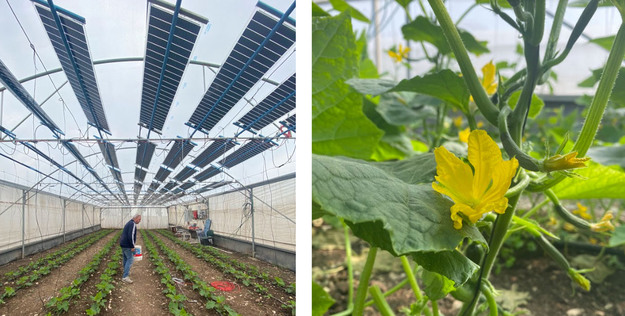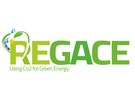The European Union (EU), through the Horizon Europe Research and Innovation Programme, has awarded €5.3 million to the REGACE Consortium to develop and demonstrate an innovative agrivoltaics technology by using CO2 enrichment to increase electricity yields.
"The REGACE system, based on an initial prototype developed by partner TriSolar, will provide affordable clean energy which combines optimum crop conditions with significant energy generation. The use of CO2 enrichment will expand agrivoltaics usage to areas with less sunshine and low light conditions. Such areas in greenhouses can be used to generate power, a particularly relevant aspect due to accelerated climate change", the researchers explain.
The REGACE Consortium is composed of 12 partners from five countries. The REGACE project held its kickoff meeting in Kafr Kara, Israel, February 7–10, 2023.
The TriSolar technology used in REGRACE's Agrivoltaics (combination of agriculture and photovoltaic technology) system is based on mounting a responsive tracking system in greenhouses under the greenhouse canopy, driven by a PLC controller that changes the angle of the tracking system according to the plants' needs.
"The lightweight, plug and play responsive PV tracking system, placed inside the greenhouse, combines power generation with optimum crop yield by providing plants with the optimum light and temperature," the researchers show, adding the technology to be highly competitive compared to other solutions, as it fully addresses the desired destination impact of clean, affordable energy with a projected installed 20-30% lower than ground-based PV fields.
"REGACE uses carbon dioxide (CO2) enrichment to increase electricity production in low light conditions. By increasing the concentration of CO2 in the air, the efficiency of photosynthesis in certain plants can be improved and thus increase crop yields. When CO2 levels are higher, plants can take in more of the gas, which can lead to increased growth."
"Using CO2 enrichment will boost plant growth under lower light levels. This will allow the responsive tracking system to operate with panels at a more acute angle to the sun, thus increasing the amount of electricity generated. By offsetting higher shading levels of PV with CO2 enrichment, the REGACE solution will increase both crop and electric yields of the agrivoltaic system."

Reducing carbon footprint
In addition to the economic impact, the technology will also lead to significant positive effects on ecological-environmental sustainability by reducing the carbon footprint of conventional solar energy.
"The REGACE technology will allow the dual use of land and infrastructure and will lead to reduced construction and maintenance costs, duration of execution, and the reduction of CO2 emissions caused by conventional agrivoltaic installations," said REGACE coordinator Dr. Ibrahim Yehia of the Alzahrawi Society.
"REGACE will have a significant positive effect on ecological, environmental sustainability, and reduced ecological footprint. The project's outputs will contribute to the diversification of the energy-producing market, enabling small-holding greenhouse owners to play a significant role in the market," he added.
REGACE's cost-effective agrivoltaic solution will offer tools to transform traditional food-growing areas into full participants in the renewable circular energy economy. Instead of large, anonymous external firms creating PV deserts in rural areas, each greenhouse owner can become a stakeholder selling clean energy. This creates new value chains for food growers, who become an important part of the energy economy, creating solar energy jobs in farm economy regions.
The REGACE solution will be demonstrated in operational research and farming environments in six locations with different greenhouse types and crops.
For more information:
Regace
regaceproject.com
